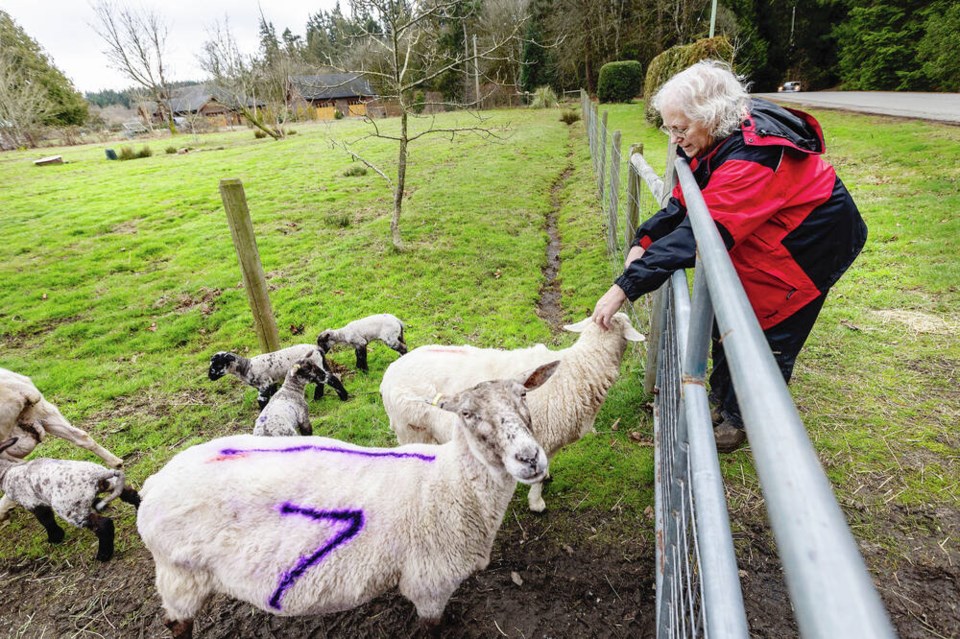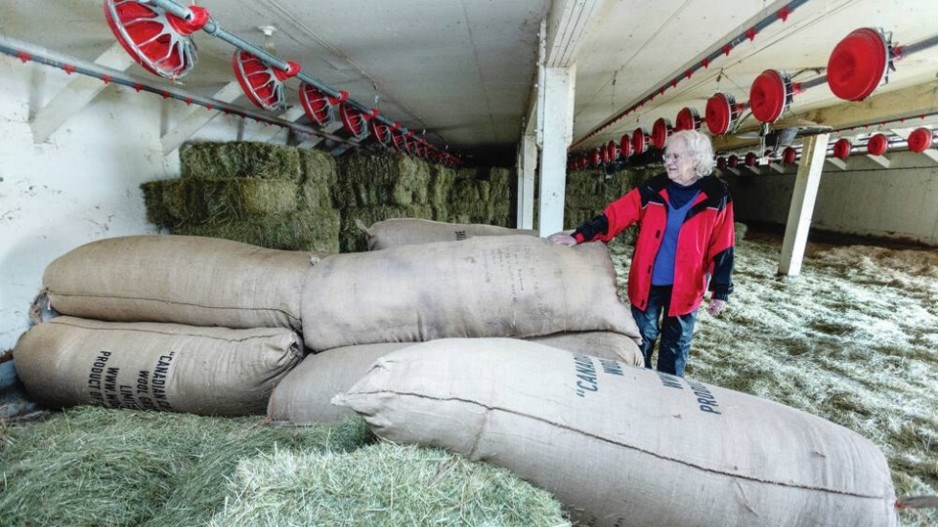The sheep have been sheared and the lambs are starting to drop at Parry Bay Sheep Farm in Metchosin.
Lamb prices have never been better, but John and Lorraine Buchanan are at a loss when it comes to the endless amounts of wool that comes off their ewes and market lambs.
The Island’s largest sheep farmers, with about 300 ewes, are sitting on mountains of wool — but the market price for sheep fibre has hit the floor.
Wool is fetching 10 to 70 cents a pound today, depending on the type and quality, down from $2 to $5 a decade ago, and much more historically. Since 2018, the price of wool on the world market has slid more than 65%.
John Buchanan said those prices don’t come close to covering the costs of shearing or even the heavy burlap bags needed for shipping, not to mention the labour associated with picking out the poop and packing the wool — and certainly not the transportation costs over to the Lower Mainland to deliver it to depots and eventually mills in Alberta and Ontario.
“In the old days, a fleece was worth a day’s work … now it’s less than five minutes,” says John, who has been farming sheep since 1969 on the Island. “The farmer I learned from said he would pay for his winter feed from the wool he took off that year, and the lambs were going to be for his wages. Now winter feed is nearly $200 [a sheep] and the wool isn’t even worth a dollar.”
Shearers, who take five to eight pounds of wool off each sheep, charge up to $15 per animal.
“It’s just not worth selling it anymore for the amount of work you’ve got to do to sell it,” said Lorraine Buchanan.
The collapsing market for Canadian wool is being blamed on several factors, including a shift to producing polyester and plastic-fibre textiles.
China — the largest buyer of Canadian wool — also placed embargoes on wool and other goods after the arrest of Huawei executive Meng Wanzhou in late 2018. The start of the pandemic in 2019 and the shutdown of factories and mills led to a global oversupply that put wool prices in free fall.
The Buchanans have burned wool in some years, and at times thrown it into the compost to augment hay fields or grain crops. And they say a lot of smaller producers have done the same.
“Most of the wool that’s grown around here gets thrown away,” said John. “If you’ve got five sheep and you’re getting a dollar a fleece, it’s not worth worrying about.”
Compounding the problem is the fact there are no local wool mills left to process the fleeces. Like dominoes, Island mills have disappeared over the years, with facilities in Qualicum Bay, Duncan, Metchosin, Saanich and Salt Spring Island all shutting down.
What remains on the Island are small-scale wool processors, largely individual weavers and artisans.
In B.C., there is just one major wool mill left, located in Kamloops.





